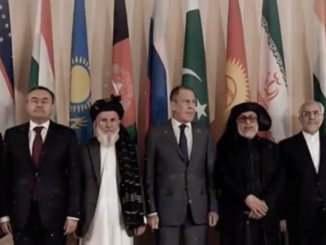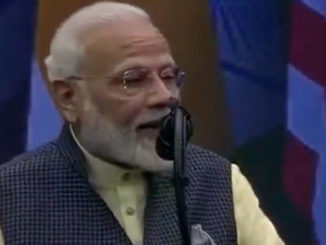
The bombing of the world trade center and the refusal of the Taliban to hand over Osama Bin Laden to the USA became the instant causes of the US war in Afghanistan. Looking back on the decades till 2001, one is justified to ask what the US and NATO forces achieved and squandered in the seemingly ending conflict. With the evacuation of the Bagram airbase, the US military presence is at an all-time low. According to SIGAR, a congressional research service, the US military reached a figure of 4000 last December from the gigantic number of over 100,000 during 2011. The International forces landed in Afghanistan for the purpose of eliminating terrorism and establishing an accepted form of govt in the divided country, but it seems that they haven’t achieved their desired goals so far. Analyzing the decades-old war, it is clear that the US forces accomplished certain objectives while falling short of others.
To begin with the war gains, the first trinket that springs to mind is the education sector. Afghan’s education sector was in limbo during Taliban rule. Education for boys was not encouraged and almost no girl attended school. Fearing the Taliban, no one had tried to enroll his daughter in any school or college. On the contrary, Afghanistan s literary rate recently surpassed that of Niger, Mali, South Sudan, and many other countries. According to a USAID report, 3.5 million girls are enrolled, and 30% of women are literate in Afghanistan. This is a good score against the reports of 2001. Several NGOs, including Sahar, UNICEF, and others, are now working in the education sector to ensure that Afghan children may enroll in schools.
Another sector where the US authorities have made progress is giving rights to women. The opposite gender was given special attention by the different NGOs after the international intervention in 2001. During the Taliban’s rule, women were not permitted to go out of their homes without their male company. According to a report, they were not permitted to attend schools or take advantage of the medical services offered by male doctors. Women were not permitted to participate in politics or public life, and they were also not permitted to work outside the household. After the international intervention, their status improved to a greater extent. Today, they are given 30% in the 249 seats of the lower house which is more than significant. Enrollment of girls in schools has increased with graduate degree holders and artists. In the same manner, international aid has decreased the maternal and infant mortality rates which shows improvement in the health of Afghans’ women as well.
International forces have also invested heavily in infrastructure, peacekeeping, refugee assistance, and helping flood victims. While billions of dollars are pumped into Afghanistan, they remain unaccounted for due to widespread corruption and theft. Afghan military and police forces are trained by the combined forces against terrorism, but they can’t save themselves against the attacks of the Taliban. Opium production is at the highest level, and most Afghans still live in poverty despite the mega economic aid annually.
The first major failure of US and NATO forces is their inability to control opium production. Poppy production is on the increase in Afghanistan ever since the international forces plunged into the war. According to a UN report, opium was almost extinct during the Taliban’s rule. On the flip side, Afghanistan is providing 80% of world opium today. Not only the Afghan people, but the Taliban are also taking interest in poppy production as it is their main source of income. This can be proved by the southern Helmond province, controlled by the Taliban which is the major supplier of the country’s poopy export. Despite the mega projects of antinarcotic, the US was unable to control the opium export and is a complete failure on its part.
Another area where the combined forces have failed is the training of Afghan defence forces. The Afghan army, police, and air force have been training by the US for the last two decades, but they don’t show any resistance to the Taliban at all. They have received help and munitions from the US air force so far, but what will happen when America leaves? If they can’t defend themselves, how can they defend other Afghan citizens and territories? With the clearance of the Bagram airbase, Afghan forces are crossing the international border with Tajikistan from the fear of the Taliban almost on daily basis. The hierarchy of the army is filled with rampant corruption and their morale is at the lowest. The armed forces have not visited their villages for years because of the Taliban’s control over their homes. They also lack logistics, funds and ammunition. These pictures that US forces have imitated Micky mouse and have done nothing good for the defense forces of Afghanistan.
Political instability is also a significant issue for Afghanistan. The US has established democratic institutions in the war-torn country, but no one can guarantee their survival. The balance of power between the different institutions and the conflict over important appointments have derailed the stability to a larger extent. The tenure of president Ahmad Karzai from 2001 till 2014 was characterized by pacts and agreements with elites and feudal lords over the use of power in their respective domains. He gave up some of his powers to the political elites but never attempted to give them substantial power lest they become too powerful. This strategy was effective in the short term but not in the long run. The remaining time is also characterized by a constant conflict between president Ghani and Abdullah Abdullah. In the 2014 elections, both claimed their victory, and an agreement was reached, making Abdullah Abdullah the prime minister. The scenario was exactly the same in the 2020 elections and the same agreement was reached upon for the second time. With political instability at its peak, people are thrown into poverty, unemployment and their trust in government organizations has diminished.
The reality is that the US may never disclose its human rights violations in Afghanistan. The warlords which the US had chosen turned against the innocent Afghanis. The former vice president Abdul Rahim Dostum had massacred thousands of innocent Pashtuns, and on the other hand, the Taliban had targeted the innocent Hazara community into thousands. Dostum is only one such example, and there are many other warlords who constantly abused human lives under the blanket of NATO forces.
Now, when the war is on the horizon of its ending, the US administration should bring to the public their analysis of the 20 years war. Certainly, NATO forces have achieved some gains in the decades like improvement in education, health, women rights, and active role of social media, but the causalities in the war are exceeding the gains. If studied deeply, then it is revealed that the major causes of the downfall of the NATO forces in Afghanistan are the widespread corruption and the human rights violations committed both by the international forces and the Afghan administration.
![]()





Be the first to comment